
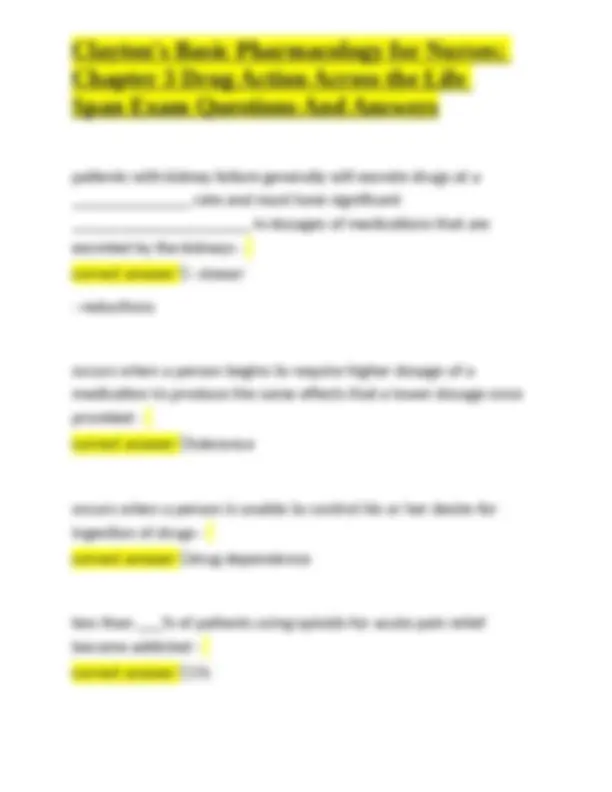
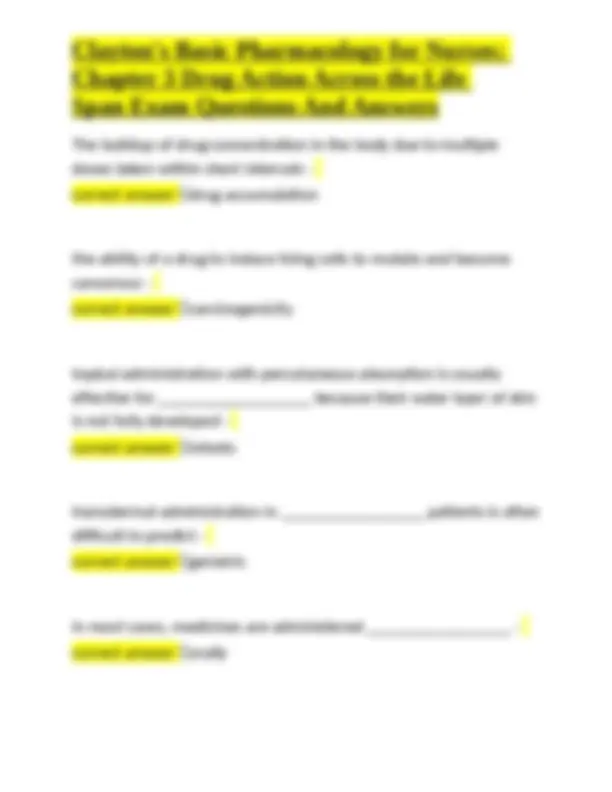
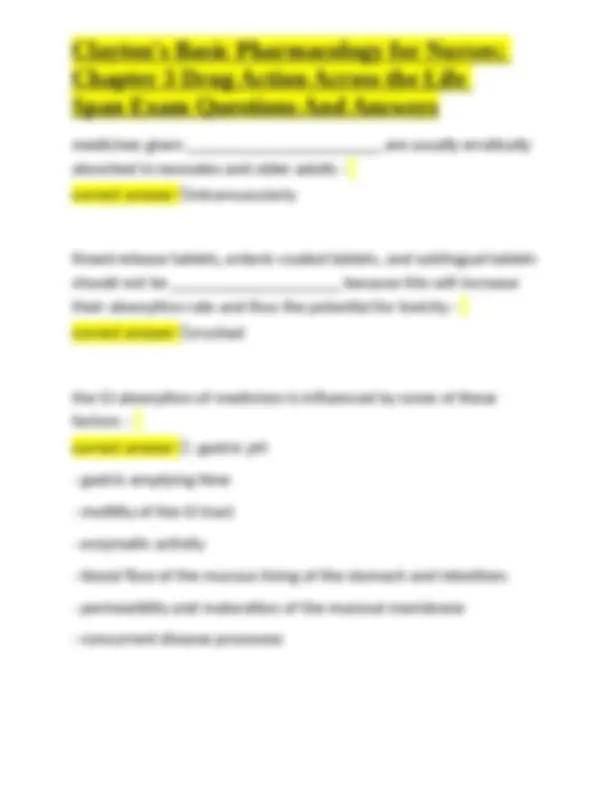
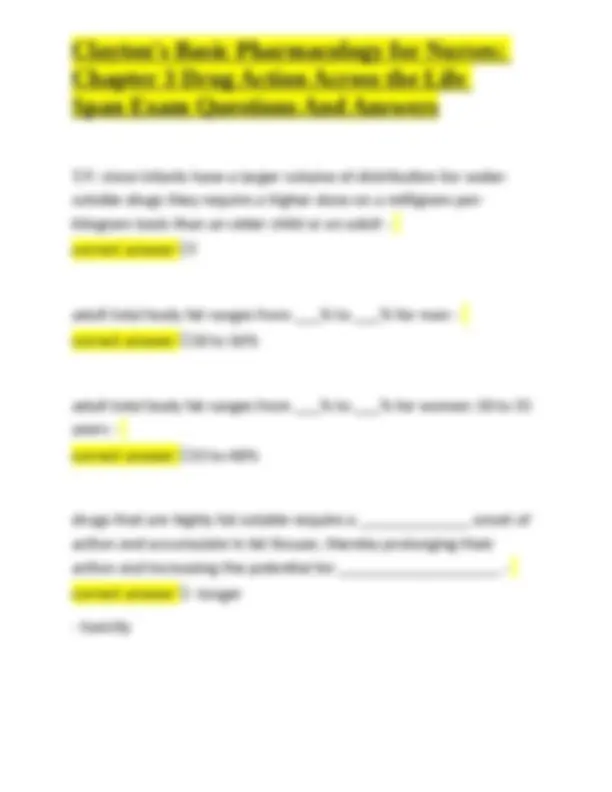
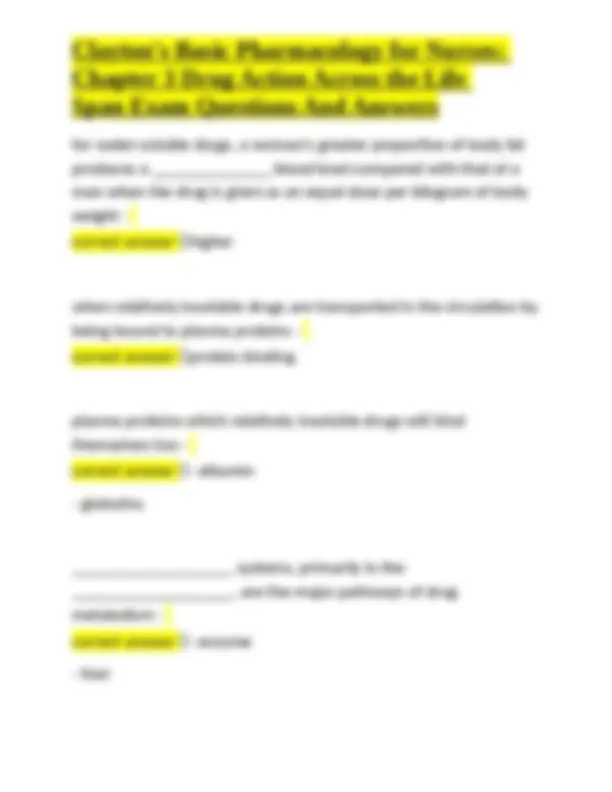
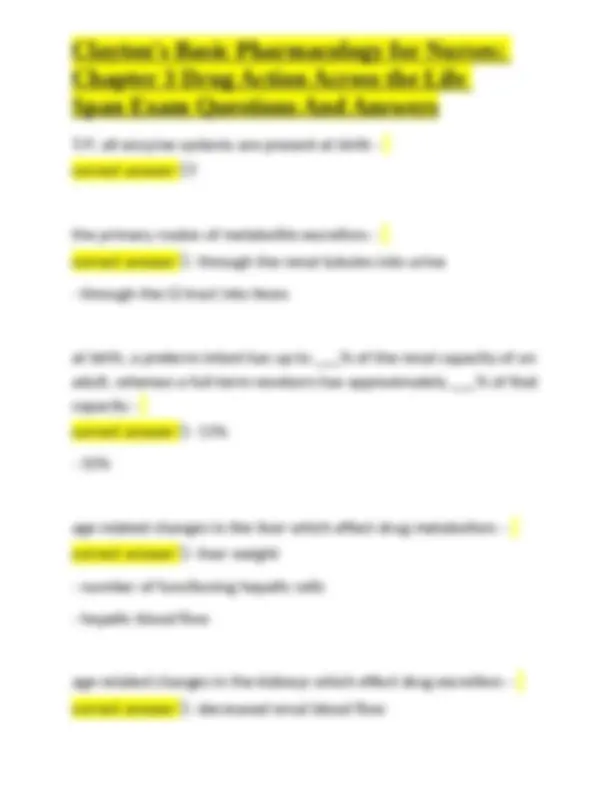
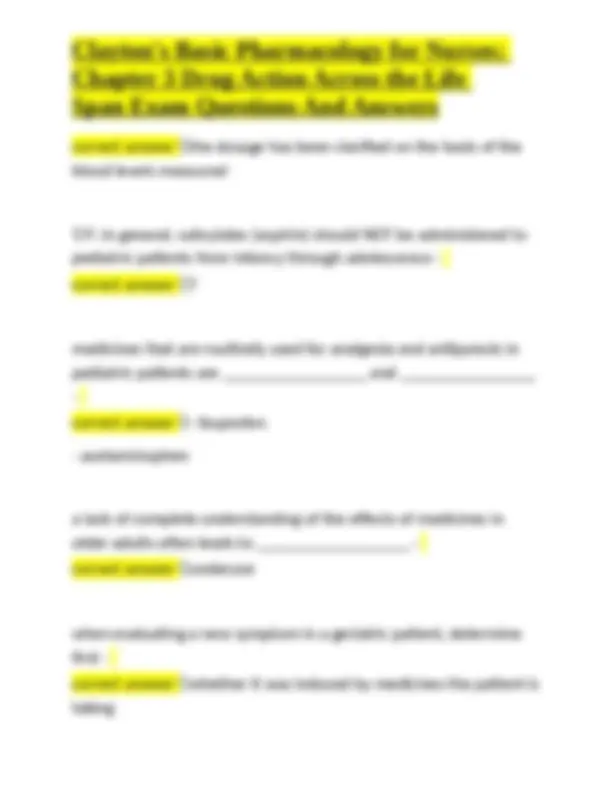
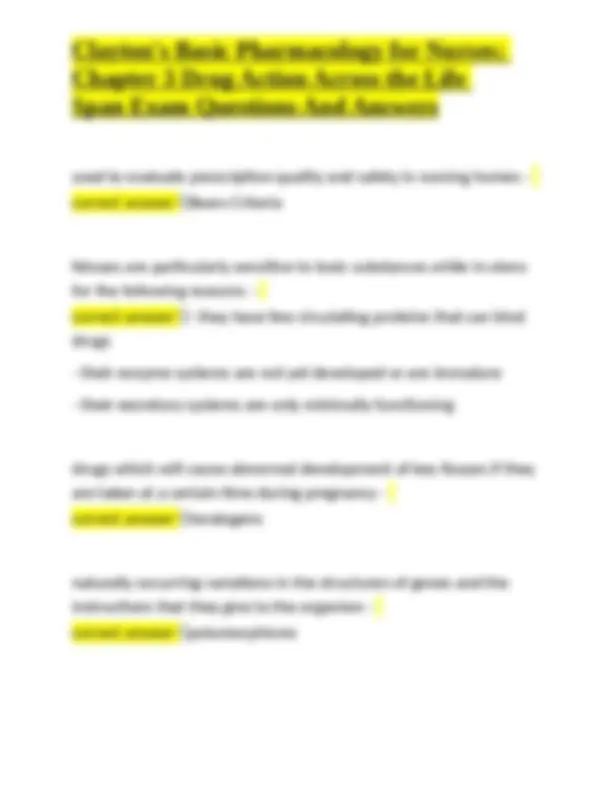



Study with the several resources on Docsity

Earn points by helping other students or get them with a premium plan


Prepare for your exams
Study with the several resources on Docsity

Earn points to download
Earn points by helping other students or get them with a premium plan
Community
Ask the community for help and clear up your study doubts
Discover the best universities in your country according to Docsity users
Free resources
Download our free guides on studying techniques, anxiety management strategies, and thesis advice from Docsity tutors
Clayton's Basic Pharmacology for Nurses: Chapter 3 Drug Action Across the Life Span Exam Questions And Answers
Typology: Exams
1 / 15

This page cannot be seen from the preview
Don't miss anything!










list of factors identified as contributors to the variable response to drugs - correct answer ✅- age
a developing science that studies differences in the normal function of men and women and addresses how people of each gender perceive and experience disease - correct answer ✅gender-specific medicine chronic smoking ________________ the metabolism of some drugs, thereby requiring larger doses to be administered more frequently for therapeutic effect - correct answer ✅enhances patients who are in shock have reduced peripheral vascular circulation and will absorb ____________________ or _______________________ injected drugs more slowly - correct answer ✅- intramuscularly
The buildup of drug concentration in the body due to multiple doses taken within short intervals - correct answer ✅drug accumulation the ability of a drug to induce living cells to mutate and become cancerous - correct answer ✅carcinogenicity topical administration with percutaneous absorption is usually effective for __________________ because their outer layer of skin is not fully developed - correct answer ✅infants transdermal administration in _________________ patients is often difficult to predict - correct answer ✅geriatric in most cases, medicines are administered _________________ - correct answer ✅orally
medicines given _______________________ are usually erratically absorbed in neonates and older adults - correct answer ✅intramuscularly timed-release tablets, enteric-coated tablets, and sublingual tablets should not be ____________________ because this will increase their absorption rate and thus the potential for toxicity - correct answer ✅crushed the GI absorption of medicines is influenced by some of these factors: - correct answer ✅- gastric pH
the speed at which the intestine moves foods, secretions, and other ingested matter along - correct answer ✅intestinal transit T/F: generally, a woman's stomach empties solids more slowly than a man's does, and it may have greater gastric acidity, thus slowing the absorption of certain types of medicines - correct answer ✅T T/F: women have higher gastric levels of the enzyme alcohol dehydrogenase, which is needed to metabolize ingested alcohol - correct answer ✅F the distribution of a drug within the body is dependent on: - correct answer ✅- pH
T/F: since infants have a larger volume of distribution for water- soluble drugs they require a higher dose on a milligram-per- kilogram basis than an older child or an adult - correct answer ✅T adult total body fat ranges from ___% to ___% for men - correct answer ✅18 to 36% adult total body fat ranges from ___% to ___% for women 18 to 35 years - correct answer ✅33 to 48% drugs that are highly fat soluble require a _____________ onset of action and accumulate in fat tissues, thereby prolonging their action and increasing the potential for ___________________ - correct answer ✅- longer
T/F: all enzyme systems are present at birth - correct answer ✅T the primary routes of metabolite excretion: - correct answer ✅- through the renal tubules into urine
correct answer ✅the dosage has been clarified on the basis of the blood levels measured T/F: in general, salicylates (aspirin) should NOT be administered to pediatric patients from infancy through adolescence - correct answer ✅T medicines that are routinely used for analgesia and antipyresis in pediatric patients are _________________ and ________________
correct answer ✅- ibuprofen
used to evaluate prescription quality and safety in nursing homes - correct answer ✅Beers Criteria fetuses are particularly sensitive to toxic substances while in utero for the following reasons: - correct answer ✅- they have few circulating proteins that can bind drugs